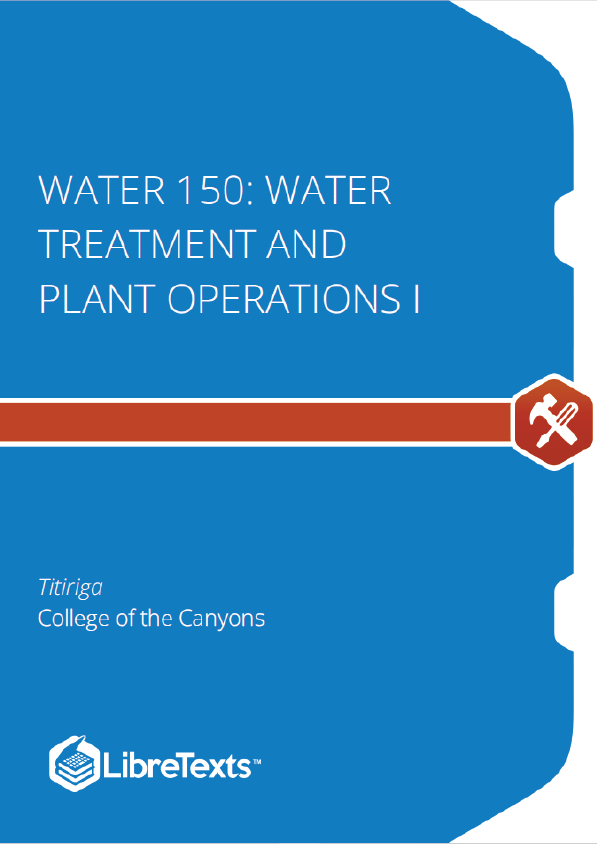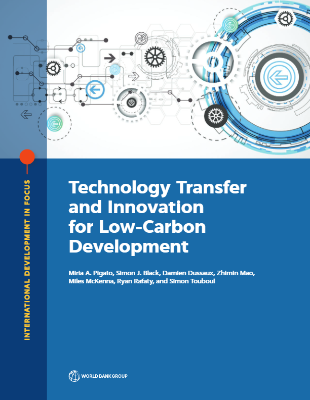This text presents the basic operating principles and techniques of the conventional surface water treatment processes of coagulation, flocculation, sedimentation, and filtration, plus those of disinfection processes. Assists in preparation for Grade T1 and T2 Water Treatment Plant Operator’s Certificate examination given by the State of California Water Resources Control Board.
A very finite amount of water on our planet (0.34%) is available to treat for human consumption. Knowing where the water comes from assists certified operators in treating raw source water to make it potable. Newer technology has been developed to treat salinized or salty water found in the ocean. These treatment methods are still extremely expensive and not widely accessible. Supplying water to the public is an extremely important function in society as water is the basic building block of life. Because water quality is of the utmost importance new regulations and water quality standards are continually changing and evolving to make sure the public has safe sources of drinking water. The first drinking water standards were written in the Safe Drinking Water Act (SDWA), which was signed into law by President Ford in 1974. Throughout the text, new concepts will be introduced and an acronym will be given and used subsequently. You are going to learn to love acronyms if you become a certified operator. We use them quite frequently!
Groundwater
Groundwater is one of the two main sources of storage used by municipalities to produce potable water. It is formed by the percolation (infiltration and/or recharge) of water from the surface of the earth to the subsurface. Water moves through holes and cracks in the subsurface and collects in an underground aquifer. An aquifer is a geologic formation that accumulates water due to its porousness. Important characteristics of groundwater include consistent water quality and the ability to remain safe from surface contamination. With greater technology and testing methods chemicals and constituents known to be harmful to humans have been found in numerous well sites throughout the United States. Wells close to industrial areas have been contaminated with harmful chemicals and substances. New regulations are continually being updated to ensure source groundwater is safe to drink. In normal circumstances, very little treatment is required to yield groundwater.
The Groundwater Treatment Rule (GWTR) was enacted in 2006 to prevent microbial contamination from underground water supplies. The purpose of the new rule was to classify water systems that were at a greater risk for fecal contamination. These systems must employ a multiple-barrier protection similar to the surface water treatment rule which will be covered in more detail in the next section.
Confined aquifers, also known as artesian wells, contain water that is confined due to layers of low permeability. These layers, which restrict movement, are comprised of rock or hard clay and are referred to as confining beds, aquitards, or aquicludes. Artesian wells are generally under pressure when drilled. Once drilled the water level at which the column of water will rise is known as the piezometric surface. Sometimes, the water will rise to the surface or past the surface but in the instance, the water remains below it is known as a non-flowing artesian well.
Surface Water
Throughout the United States, surface water is the most widely used source of water for large cities and other municipalities. Groundwater is not as widely available so is not a sufficient water supply for major cities. Surface water includes lakes, ponds, rivers, and streams. California is unique as the southern half of the state has 2/3 of the population but only 1/3 of the available water and the northern half of the state has 1/3 of the population but 2/3 of the water. Snowpack in northern California is critical to the state’s water supply. Most of Southern California is very arid and densely populated so water travels from Northern California through the State Water Project to Southern California. Surface runoff supplies water for all surface water sources. Influences of surface runoff include intensity of rainfall, duration of rainfall, composition of soil, amount of moisture in soil, slope of the ground, vegetation coverage, and human influences. One would think that a lot of rain would be ideal. However, if the rainfall density is too great, more water can be lost because the ground will no longer absorb the water. The same applies to the duration of rainfall. A prolonged rain even makes the soil too moist and unable to capture water. Vegetation coverage and the slope of the ground are very important to stopping runoff. If the slope of the ground is steep, the speed of runoff is increased. Vegetation slows the speed of runoff and allows more water to absorb or infiltrate into the ground. Human influences have a great impact on water runoff. Impervious surfaces like concrete entirely prevent infiltration.











